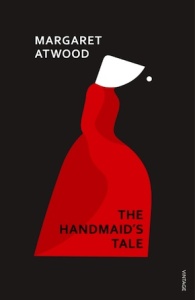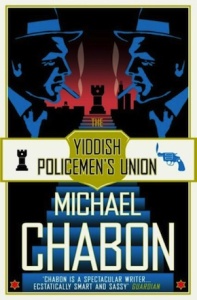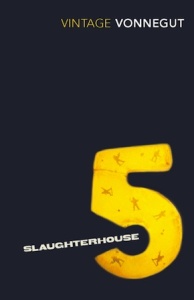Other worlds
by Doug Johnstone
“Richly characterised, beautifully crafted, this is a book that you truly inhabit. A true must read.” Emma Kavanagh
I love a good dystopia as much as the next reader. Throw me into a destroyed civilisation with a handful of plucky survivors struggling to stay alive, and I’m right in there with the can opener and home-made water filters. But sometimes I struggle to understand how that world came from this one – the distance travelled is too far, the descent too dramatic.
I’ve come to realise over the years that what I love even more than full-on apocalypse is a world that is just slightly out of step with the one we really live in. A world that on the surface seems like the real world, but where something sinister lies just underneath.
The stories below go by a variety of categories – speculative fiction, alternative history and so on. Some of them verge into fantasy or sci-fi, others are literary or crime, but all of them are just that little bit off-kilter and weird. My new novel Fault Lines falls into that category, set in an alternate Edinburgh which has been a major earthquake and volcano zone for twenty-five years, and in which a new volcanic island has emerged in the Firth of Forth. Apart from that it’s the Edinburgh I know and love, and that is part of the appeal of such stories to me. To make people really believe in the outlandish, it helps to ground them in reality. All of these stories do exactly that.
Never Let Me Go by Kazuo Ishiguro
This is perfect example of an off-kilter world. The book focuses on kids at a boarding school in what seems like an old-fashioned world. But there is a creeping sense as the narrative progresses that something is not quite right. Gradually, and with painful amounts of tension, it’s revealed that the children are clones, being raised so that their organs can be harvested. They know this and are happy about it, seeing it as their destiny and fate. That’s the central driving force of the book, as the reader continually screams at the pages about the unfairness of the society, and the maddening acceptance of the people in it. Smart stuff.
Atwood famously said that she deliberately only included events and actions that had happened somewhere in the world.”
 The Handmaid’s Tale by Margaret Atwood
The Handmaid’s Tale by Margaret Atwood
This terrific piece of speculative fiction will be familiar to a whole new generation thanks to the stunning television adaptation that has been winning awards all over the place. The central conceit is very simple, imagine if an extreme theocracy had taken control of America. Throw in a plague of infertility, and the idea that women who can conceive children are used against their will by their masters to keep the population going, and you have a terrifying yet entirely believable scenario. Atwood famously said that when she sat down to write this, she deliberately only included events and actions that had happened somewhere in the world. The shock to Western readers is seeing it all happening in a modern America that they completely recognise.
The Stepford Wives by Ira Levin
I could’ve included any of a handful of Levin’s novels, including Rosemary’s Baby and The Boys From Brazil, but The Stepford Wives is my favourite of his. The book is a satire dealing with misogyny and feminism, and revolves around Joanna Eberhart, a successful New York photographer who moves to a small town in Connecticut with her husband. There, they find that all the wives in the town are incredibly submissive to their husbands, and have no ambitions or lives of their own. Joanna and her husband laugh at them to begin with, but gradually Joanna begins to suspect that the men have replaced their wives with placid robots. This is a novel all about the male desire for control over women, and it is truly terrifying partly because the depiction of small-town life is so vivid.
Annihilation by Jeff VanderMeer
This is the first of the books here that veers into science fiction, but to my mind it is very much rooted in reality. The story is that four women with military and scientific experience are sent into a region called Area X somewhere in the Florida swamps. The government has sent in lots of squads in the past, very few have come out alive, and those that have escaped are somehow mysteriously changed. What the search party finds inside Area X is real yet also unreal at the same time, and they each suspect hallucinations. But what they’re seeing is a weird, alien adaptation of their environment, as if something extraterrestrial is combining with and adapting the world according to its own survival rules. And that adaptation includes the members of the search party themselves, who gradually come to realise that no matter what happens, they will be forever changed.
 The Yiddish Policemen’s Union by Michael Chabon
The Yiddish Policemen’s Union by Michael Chabon
This falls firmly into the alternative history subgenre, where instead of the State of Israel being established after the Second World War, a Jewish homeland is set up in Alaska. The story is a hilarious yarn full of Jewish humour, but also a serious detective novel, written as a pastiche of the classic American noir novels of the 1930s and ’40’s. Chabon has a lot of fun examining his central premise, but he never forgets to include an emotional core in his story.
Story of Your Life by Ted Chiang
Chiang is often touted as the science-fiction writers’ science-fiction writer, and this perfect short story, adapted for film by Eric Heisserer and Denis Villeneuve as Arrival in 2016, is the epitome of that. On the surface, it’s a ‘first contact’ sci-fi story, as a linguist is invited to try to communicate with aliens who have landed on earth. But there is so much more going on that that. Chiang is super-smart, and he uses his central character to look at issues of linguistics and language, and eventually examine the nature and perception of time and space, and how our language can influence that. This is as far away as you can get from flying saucers and ray guns, a story that looks deeply at how we live our lives and how we cope with the bad things that the universe throws at us.
The Power by Naomi Alderman
This was Alderman’s fourth novel, published in 2016, after she had spent some time being mentored by Margaret Atwood, and her mentor’s influence certainly shows in this tremendous speculative story. The central flip to normality is simple: at some point women developed and shared the capacity to release electric jolts from their fingers. Over time this resulted in women becoming the dominant sex on the planet, with inevitably wide-ranging transformations to society. The book seems to be set in the far future and is almost written as a religious tract, an origin story if you will, which gives it all the more veracity.
The anti-war message works all the better for being subtly delivered amongst all the weirdness.”
 Slaughterhouse-Five by Kurt Vonnegut
Slaughterhouse-Five by Kurt Vonnegut
We couldn’t really have a list of off-kilter worlds without Kurt Vonnegut. This is such a strange book but so utterly compelling at the same time. Ostensibly the story is about Billy Pilgrim and his experiences during the Second World War as a prisoner of war in Dresden when it gets bombed by the allies. But Vonnegut couches the real-life experience in a narrative that jumps around in time, following flash-forwards and flashbacks as Billy travels in time, is abducted by aliens and all sorts of fantastical stuff. The anti-war message works all the better for being subtly delivered amongst all the weirdness, and Vonnegut’s ideas about time and space make this an existential trip to savour.
Dirk Gently’s Holistic Detective Agency by Douglas Adams
This book, written by the man who gave us The Hitchhiker’s Guide to the Galaxy, apparently originated from a Doctor Who script that Adams was commissioned to write that somehow never got filmed. Doctor Who’s loss is our gain, with this weird existential detective story set around the spires of Cambridge University. Richard MacDuff is the everyman who meets up with old school-friend Dirk Gently, a detective who believes in the interconnectedness of all things. The mysteries range from a missing cat to a sofa that’s stuck in an impossible position on some stairs, to the destruction of humanity, and all points in between. This is a perfect example of a central character having their world turned upside down, and it also includes an electric monk.
Come Closer by Sara Gran
This is one of my favourite books of all time. It’s a very simple horror novella, where the narrator’s life starts going to shit and she begins to suspect that she is being targeted by a demon for possession. It’s possibly a supernatural horror story, but the way Gran delivers the narrative it’s also entirely possible that the central character is just having a breakdown of some kind. The way Gran escalates the tension and drama is absolutely sublime, and she carries her readers the whole way, in the end making them root for someone doing some pretty unspeakable things. This off-kilter world is more internal than external, but all the more claustrophobic and compelling as a result.
 Doug Johnstone is an author, journalist and musician based in Edinburgh. He’s had eight novels published, most recently Crash Land. His previous novel, The Jump, was a finalist for the McIlvanney Prize for Scottish Crime Novel of the Year. Several of his other novels have been award-winners and bestsellers, and he’s had short stories published in numerous anthologies and literary magazines. His work has been praised by the likes of Ian Rankin, Val McDermid and Irvine Welsh. Several of his novels have been optioned for film and television. Fault Lines is published by Orenda Books in paperback and eBook.
Doug Johnstone is an author, journalist and musician based in Edinburgh. He’s had eight novels published, most recently Crash Land. His previous novel, The Jump, was a finalist for the McIlvanney Prize for Scottish Crime Novel of the Year. Several of his other novels have been award-winners and bestsellers, and he’s had short stories published in numerous anthologies and literary magazines. His work has been praised by the likes of Ian Rankin, Val McDermid and Irvine Welsh. Several of his novels have been optioned for film and television. Fault Lines is published by Orenda Books in paperback and eBook.
Read more
dougjohnstone.com
@doug_johnstone

